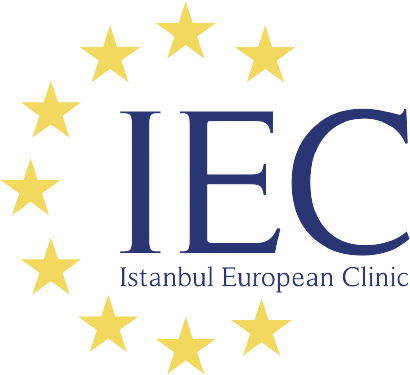Breast Reduction Treatment
Breast reduction and uplift can be life-changing procedures for women struggling with the physical and emotional discomfort caused by excessively large breasts. If you’re considering these options, educating yourself on the techniques used, the recovery process, and the costs involved is essential. In this comprehensive guide, we’ll provide a detailed overview of breast reduction that will help you feel informed and empowered to make the best decision for your body and well-being.
Procedure: Breast Reduction
Duration: 2 – 3 hours
Length of Stay in Hospital : 1 – 2 nights
Cost in Turkey: €3150 – €3750
Anesthesia: General anesthesia
Success Rate: 90%
Final Results: 4-6 weeks
Scars: Invisible
Pain: Slight
What’s Breast Reduction?
Breast reduction and uplift can be life-changing procedures for women struggling with the physical and emotional discomfort caused by excessively large breasts.
If you’re considering these options, educating yourself on the techniques used, the recovery process, and the costs involved is essential.
In this comprehensive guide, we’ll provide a detailed overview of breast reduction that will help you feel informed and empowered to make the best decision for your body and well-being.

Reasons Why Women Opt for Breast Reduction
There are many reasons to choose breast reduction surgery, including:
- Physical discomfort: Large breasts can cause various physical problems, including back pain, neck pain, shoulder pain, and even headaches. reduction mammoplasty surgery can relieve these symptoms by reducing the size and weight of the breasts.
- Emotional distress: Having large breasts can also cause emotional distress, including feelings of self-consciousness and embarrassment. reduction mammoplasty can improve body image and self-confidence.
- Difficulty finding clothes that fit: Women with large breasts often struggle to find clothing that fits well and flatters their figure. Breast reduction surgery can make it easier to find clothing that fits properly and feels comfortable.
- Difficulty exercising: Large breasts can make exercising difficult, leading to a sedentary lifestyle and weight gain. Breast reduction surgery can make it easier to engage in physical activity and lead a healthy lifestyle.
- Personal preference: Some women simply prefer the look of smaller breasts and choose to have reduced mammoplasty for cosmetic reasons.
If you’re considering breast reduction surgery in Turkey, it’s important to be aware of the breast reduction price in Turkey and the minimum size for breast reduction.
However, the decision to have a reduction mammoplasty should be based on your personal goals, needs, and preferences.
Who is an Ideal Candidate for Breast Reduction
If you’re considering a breast reduction or uplift, it’s essential to determine whether you’re an ideal candidate for the procedure. Here are some factors to consider:
- Good overall health: Breast reduction is a major surgical procedure, so it’s important to be in good overall health before undergoing surgery.
- Non-smoker: Smoking can increase the risk of complications during and after surgery, so it’s important to quit smoking before undergoing a reduction mammoplasty.
- Realistic expectations: Patients should have realistic expectations about the procedure’s outcome and understand that there may be some scarring.
- Age: Younger patients may not be suitable candidates for reduction mammoplasty, as their breasts may still be developing. Additionally, older patients may be at a higher risk for complications during surgery and may take longer to recover. Your surgeon will evaluate your age and overall health to determine whether reduction mammoplasty is safe and appropriate for you.
- Weight: Patients who are significantly overweight may not be good candidates for reduction mammoplasty, as excess body weight can increase the risk of complications during and after surgery. Additionally, if weight loss is planned, it may be recommended to postpone the surgery until after weight loss has occurred.
- Breast Size and Shape: The size and shape of your breasts will also be evaluated to determine the most appropriate surgical technique for your case. Patients with very large breasts may require a more extensive procedure, while patients with breasts that are mostly sagging may require a breast lift and reduction. Your surgeon will evaluate the size and shape of your breasts to determine the best course of action.
Ultimately, reduction mammoplasty is a highly individualized procedure, and many factors can influence whether you are an ideal candidate.
It’s important to have a thorough consultation with a qualified surgeon to determine whether reduction mammoplasty is right for you and to discuss the breast reduction surgery cost Turkey and other important factors.
Types of Breast Reduction Surgery
Here are three common types of reduction mammoplasty:
- Anchor or Inverted-T Incision: This is the most common type of reduction mammoplasty, and it is typically recommended for patients with very large breasts. The procedure involves making an anchor-shaped incision that runs around the areola, down the center of the breast, and along the underside of the breast. This incision allows the surgeon to remove excess tissue and reshape the breast to a smaller, more proportionate size.
- Vertical Incision: The vertical incision breast reduction technique involves making a lollipop-shaped incision around the areola and down the center of the breast but without the horizontal incision under the breast. This technique is often used for moderate breast reduction.
- Scarless Breast Reduction: This technique, also known as liposuction breast reduction, involves using liposuction to remove excess fat from the breast without making any incisions. This technique is only suitable for patients with good skin elasticity and minimal excess skin.
Each type of reduction mammoplasty has its own advantages and disadvantages. The right technique for you will depend on various factors, including the size and shape of your breasts and your cosmetic goals.
How is Breast Reduction Surgery Performed?
reduction mammoplasty is typically performed as an outpatient procedure under general anesthesia. Here is a step-by-step guide to how the surgery is typically performed:
Anesthesia: You will be given general anesthesia to ensure that you are asleep and pain-free during the procedure.
Incisions: The surgeon will make incisions in the breast, using the chosen technique based on the patient’s specific needs.
Removal of tissue: The surgeon will then remove excess breast tissue, fat, and skin to achieve the desired breast size and shape.
Nipple and areola repositioning: If necessary, the surgeon will reposition the nipple and areola to match the new breast shape.
Closure: The surgeon will close the incisions with stitches and may place temporary drainage tubes to remove excess fluid from the surgical site.
Recovery: After the procedure, you will be taken to a recovery area, where you will be monitored as the anesthesia wears off. You may experience some pain, swelling, and bruising in the days following surgery.
Post-operative care: You will be given specific instructions on how to care for your incisions, including how to clean and dress the wounds and when to return for follow-up appointments.
Overall, reduction mammoplasty can be life-changing for many women who suffer from discomfort and pain due to excessively large breasts.
Recovery from Breast Reduction Surgery
Recovery from breast reduction surgery can take several weeks, and it is important to follow your surgeon’s instructions to ensure a smooth and successful recovery. Here are some general tips to keep in mind:
- Rest and relaxation: Rest is crucial for the healing process. You should avoid any strenuous activity or heavy lifting for at least a few weeks after surgery.
- Pain management: You may experience some pain and discomfort after surgery. Your surgeon may prescribe pain medication or recommend over-the-counter pain relievers to help manage your discomfort.
- Proper wound care: Proper wound care is essential to prevent infection and promote healing. Be sure to follow your surgeon’s instructions for cleaning and dressing your incisions.
- Compression garments: Your surgeon may recommend wearing a compression garment to help reduce swelling and support the breasts during healing.
- Follow-up appointments: It is important to attend all follow-up appointments with your surgeon to ensure that your recovery is progressing as it should be.
- Avoid smoking and alcohol: Smoking and alcohol can interfere with healing and increase the risk of complications. Avoiding these substances for at least a few weeks after surgery is best.
- Maintain a healthy diet: A healthy diet can help support your body’s healing process. Be sure to eat a well-balanced diet rich in nutrients to help promote healing.
Following these breast reduction recovery, tips can help ensure a smooth and successful recovery after your reduction mammoplasty.
Risks and Complications of Breast Reduction Surgery
Here are some possible risks and complications of breast reduction surgery:
- Bleeding
- Infection
- Scarring
- Changes in nipple or breast sensation
- Asymmetry
- Skin necrosis
- Fat necrosis
- Breastfeeding difficulties
- Need for additional surgery
- Anesthesia complications
Alternatives to Breast Reduction Surgery
Here are some alternatives to breast reduction surgery:
- Weight loss: Losing weight may sometimes reduce the size of the breasts.
- Proper bra fitting: Wearing a well-fitted bra can help support the breasts and reduce discomfort.
- Exercise: Strengthening the chest muscles through exercise may help lift the breasts and reduce their appearance.
- Massage therapy: Some people find regular massage therapy can help reduce breast size and alleviate discomfort.
- Medications: Certain medications, such as hormonal birth control or selective estrogen receptor modulators (SERMs), may sometimes help reduce breast size.
- Non-invasive procedures: Some non-invasive procedures, such as radiofrequency ablation, may sometimes help reduce breast size.
It is important to note that these alternatives may not be effective for everyone and may not achieve the same results as breast reduction surgery.
It is best to consult with a qualified healthcare professional to determine the most appropriate treatment options for your specific needs and concerns.
Breast reduction surgery can be a life-changing procedure for women who struggle with the physical and emotional burden of overly large breasts.
The procedure offers significant benefits, including improved comfort, enhanced self-esteem, and a better quality of life.
While there are risks and complications associated with breast reduction surgery, choosing an experienced and board-certified surgeon can minimize the chances of these occurring.
If you are considering breast reduction surgery, you must schedule a consultation with a qualified plastic surgeon to discuss your options and determine if you are a good candidate.
Check out our plastic surgery treatment guides to learn more about breast reduction procedures and how they can benefit you.
Frequently Asked Questions (FAQs)
The cost of breast reduction surgery can vary depending on several factors, including the surgeon’s fees, the procedure’s location, and the surgery’s extent. In Turkey, breast reduction surgery costs typically range from around €3150 – €3750.
There is no specific size requirement for breast reduction surgery. The decision to undergo surgery is based on the individual’s level of discomfort or pain associated with the size and weight of their breasts rather than a specific size measurement.
Breast reduction surgery is a significant surgical procedure that involves general anesthesia and several hours of surgery. While it is a major operation, it is considered safe and effective for treating large, heavy breasts.
Boobs reduction surgery is not intended as a weight loss procedure, and the amount of weight lost during the surgery is typically minimal. The surgery aims to reduce the size and weight of the breasts to alleviate physical discomfort and improve quality of life.
While weight loss may be recommended for overall health and to achieve the best possible results, it is not always necessary for breast reduction surgery. The decision to undergo surgery is based on the individual’s level of discomfort or pain associated with the size and weight of their breasts.
reduction mammoplasty surgery can help improve the body’s overall appearance by reducing the size and weight of the breasts, making the body appear more proportionate. While it may not directly lead to weight loss, it can enhance a person’s overall appearance and boost their confidence.
